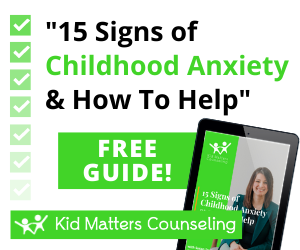Finding the best therapeutic approach for your child can be a challenging task. If you sit down and read about all of the approaches available, you’ll end up spending hours upon hours researching. It can quickly become a confusing and overwhelming process.
If your child has experienced vehicle accidents, major falls, medical or surgical procedures, violent acts or attacks, they may be a great candidate for Somatic Experiencing ® (SE). SE is a therapeutic approach that focuses on increasing body awareness and developing greater capacities to tolerate and manage challenging or stressful moments by incorporating movement into the therapeutic process.
The first way your child can benefit from SE is by gaining awareness of their somatic symptoms, or as I like to call them, “body signals.” Body signals are important for us to notice because they help us understand what our body needs.
For example, you might notice that your stomach is beginning to growl or ache and your mouth begins to get watery at the sight of yummy food. These are common signals our body gives to let us know we are hungry and need food. While we might be able to detect our body signals when we are hungry, there are many others that we frequently miss. This is especially true when we feel stressed and overwhelmed. Soon your child will not only be able to name their signals, but also share them with you so you can help them meet their needs.
The second way that your child can benefit from SE is that it helps children let go of body signals that appear to be stuck or that are experienced continuously.
Here is a short list of common body signals a child may experience after experiencing a stressful event:
- Being jumpy
- Increased tightness of the chest
- Changes in breath and heart rate
- Headaches
- Soreness in muscles
- Constant shaking of one or multiple body parts
- Stomach aches
- Blurred vision that isn’t corrected with glasses or has no medical cause
- Loss of mobility or range in mobility
- Regression in physical, language, cognitive or emotional development
All of these signals can be a result of increased stress or trauma and may be signals that our body doesn’t feel safe. Many, if not all, of these can prevent us from enjoying life. By practicing SE skills, your child can implement coping strategies that help diminish the frequency with which they experience these signals. It is important to note it is always recommended that you rule out medical causes as many of these signals can have medical origin.
Here is an example of what SE might look like for a child.
Eric is a 6-year-old boy who is starting first grade. On the first day of school, the side of the bus that Eric is sitting on gets hit by another car. Eric has no medical injuries other than a bruise on his left shoulder. The family decides to drive Eric to school for the remainder of the week and Eric is seen to have no challenges at home or school. The next week, the night before Eric begins riding the bus again, he begins to experience several body signals. At night, his body trembles and he is unable to fall asleep during his usual bedtime. In the morning, as the bus pulls up, he becomes anxious, has a stomach ache and his left arm feels very tense. Eric begins to yell “NO” and does everything in his power to prevent taking the bus.
At a glance, if we are not aware of his body signals from the night before and the morning off, we might just see a child throwing a temper tantrum because he doesn’t want to go to school. SE oriented therapy would help Eric become attuned to his body when angry or anxious, and create opportunities for him to gently increase his ability to tolerate challenging feelings and be able to ride the bus to school.

Fernando Gonzalez
Child Therapist | MSW
I help parents & children build a stronger connection through identifying, expressing, and regulating big feelings and challenging experiences.
Kid Matters Counseling has trained therapists ready to help both kids and parents walk through the tough moments in life.
End the frustration & the confusion and let's work together! SCHEDULE APPOINTMENTNew Clients Call: (855) 586-1802
Current Clients: (855) 543-7687
Ask Us Anything!
We help anxious kids and frustrated parents. We serve Hinsdale & the Western Suburbs of Chicago.
Made with ♥︎ in Hinsdale, Illinois for Chicago
Built By Brand Your Practice.
Kid Matters Counseling, P.C. DISCLAIMER: This website and blog are for informational, educational and general discussion purposes only. It is understood that no guarantee or warranty arises from the information provided, discussed or commented upon in this website and blog nor does it constitute legal or other professional advice on any subject matter. Access to this website and blog is voluntary and at the sole risk of the user. If you think that you have a medical emergency (including clinical), call your doctor or 911 immediately. A licensed medical professional should be consulted for diagnosis and treatment of any and all medical conditions. While the information contained within this website and blog is periodically updated, no guarantee is given that the information provided is correct, complete, and/or up-to-date. See our complete Privacy Policy and Terms of Service.



